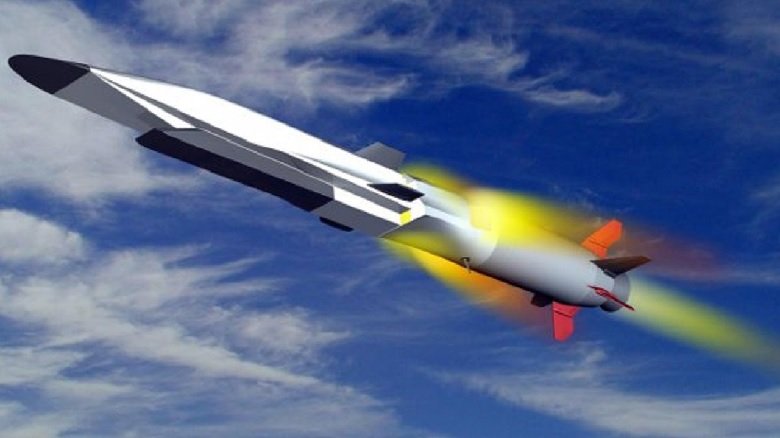Race for Mach

According to information from open sources, the rocket complex with Zircon is the latest development of AO Military Industrial Corporation NPO Mashinostroeniya (part of Tactical Missile Weapons Corporation AO). Works on the project are closed. It is only known that a rocket, whose length from 8 to 10 m, will be able to accelerate to 5 – 10 Mach and hit targets at ranges of 300 – 500 kilometers.
Today, the Russian Navy is armed with anti-ship missiles with maximum speeds of Mach 2 – 2,5. And the Mach 2,5 speed is the ultimate for modern air defense systems of a potential enemy. Thus, “Zircon” is able to reach the goal without any obstacles, ahead of the air defense weapons.
Former Baltic commander fleet Admiral Vladimir Valuev believes that for a new missile weapon it is necessary to build new surface and submarine ships or to convert existing ones. Hypersound is also beneficial from an economic point of view - the price of a rocket is incomparably lower than the price of an aircraft carrier: $ 1-2 million versus $ 5-10 billion. In addition, NATO countries will have to upgrade missile defense to the huge speed of our missile.
However, there are many skeptics who believe that the emergence of mass hypersonic weapons, especially strategic ones, should not be expected. That kind of operational-tactical weapons may appear in the near future, they say, but decent missile defenses will appear.
Hero of Labor of Russia and Hero of Socialist Labor of the USSR Herbert Efremov (adviser to the head of the military industrial complex NPO Mashinostroyenia on science) focuses on the engine of the future hypersonic rocket. According to him, for a long movement of an object in the atmosphere on a hypersound, direct-flow engines are necessary. In the existing ones it is not possible to ensure the stable operation of the combustion chambers. And it is not known whether these problems can be solved in the near future. Other types of engines, in particular turbo direct-flow engines, have been created for more than half a century, but without success.
Hope, however, was warm. Deputy Prime Minister Dmitry Rogozin recently said that the so-called detonation rocket engine (DRD) had been successfully tested in Russia. The novelty is developed by JSC NPO Energomash im. Academician V.P. Glushko "in the framework of the Advanced Research Foundation program. The detonation rocket engine is one of the ways to create hypersonic aircraft capable of reaching speed in 4 – 6 Mach. On the basis of such engines it is possible to create hypersonic weapons. The effect is that a detonation engine with much smaller dimensions and mass of fuel can give the same thrust that a huge modern liquid rocket engine.
The problem is how to ensure that the fuel and oxidizer of the rocket engine do not burn as they do now, but explode without destroying the combustion chamber - to make the explosion controlled and manageable. Experts from Energomash suggested kerosene as fuel, and gaseous oxygen was used as an oxidizer. The burning of such fuel in a detonation engine is supersonic, it is no longer about 5, but about 8 Max.
They work in this category abroad. Leading US aircraft manufacturers offer two engine projects for hypersonic aircraft: Lockheed Martin's SR-72 constructors and Boeing's unnamed name. The SR-72 project has already reached flight tests of the prototype. At Boeing is just a study of the overall appearance of the future aircraft.
To combat high temperature loads, heat-resistant materials used in the construction of intercontinental ballistic missiles and the Space Shuttle spacecraft will be used. Lockheed Martin in collaboration with other organizations is studying the subject of hypersonic direct-flow jet engines, as well as combined engines with a turbojet and direct-flow part.
A promising American hypersonic aircraft will be able to reach speeds of about 6 Mach (about 6400 km / h) and climb to a height of 24 – 25 km. Such flight characteristics are expected to make it invulnerable to modern air defense systems. Of course, even with such a high speed in flight, the machine will be detected, but the enemy will not have time to use anti-aircraft weapons. Representatives of Lockheed Martin report that the promising SR-72 can be both a reconnaissance aircraft and a platform for strike weapons.
Meanwhile, the test launch of the Russian winged Zircon in April last year showed that the speed of sound was exceeded eight times - up to 9800 km / h. Experts say: this is not the limit, the rocket can reach speed and M = 10. The missile hits any target within a radius of 500 km, it is manoeuvrable, much faster than any modern American anti-missile, and for launching it uses universal ship-mounted vertical-launch installations — the same as for the Caliber.
"Zircon" may be ready for installation on ships already this year. He will replace the heavy PKR P-700 Granit.
The United States intends to oppose the Russian Zircon with a “low-power” version of the warhead for the Trident missile, developing a new sea-based cruise missile for it. The power of the future warhead is supposed to be in 1 or 2 CT (now the Trident warheads have a power from 100 to 450 CT). The bomb dropped on Hiroshima had a charge in 15 kt.
To skeptics who do not believe in the achievement of hypersonic speeds, the scientists remind: the first cosmic velocity when launching an object into near-earth orbit is 7,8 km / s. It is 27 times the speed of sound on the ground. In this, too, did not believe.
Information